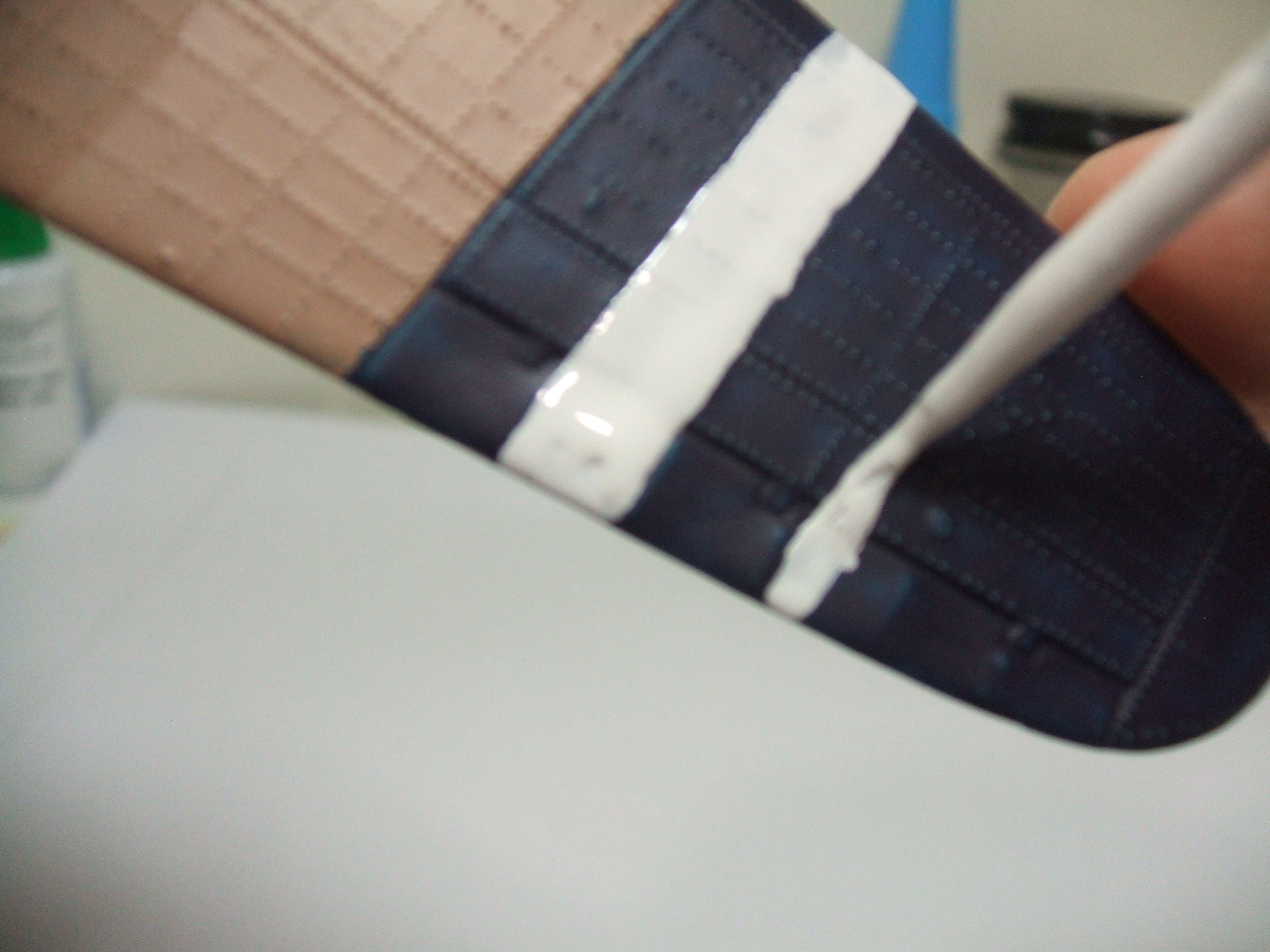
Brush Painting 101: Lesson 1
I think there is a need for “more basic” information on using brushes to paint. So I’ll do what I can to provide that. I’ve been pondering the whole “brush painting doesn’t work” meme and trying to figure out how to respond to it–so I’ll do some entries here showing basic techniques and hope it does some good.
Here is where I learn to paint. It’s part off of a kit that will not be built. It’s a paint “mule” or “dummy” that I’ll use for practice.
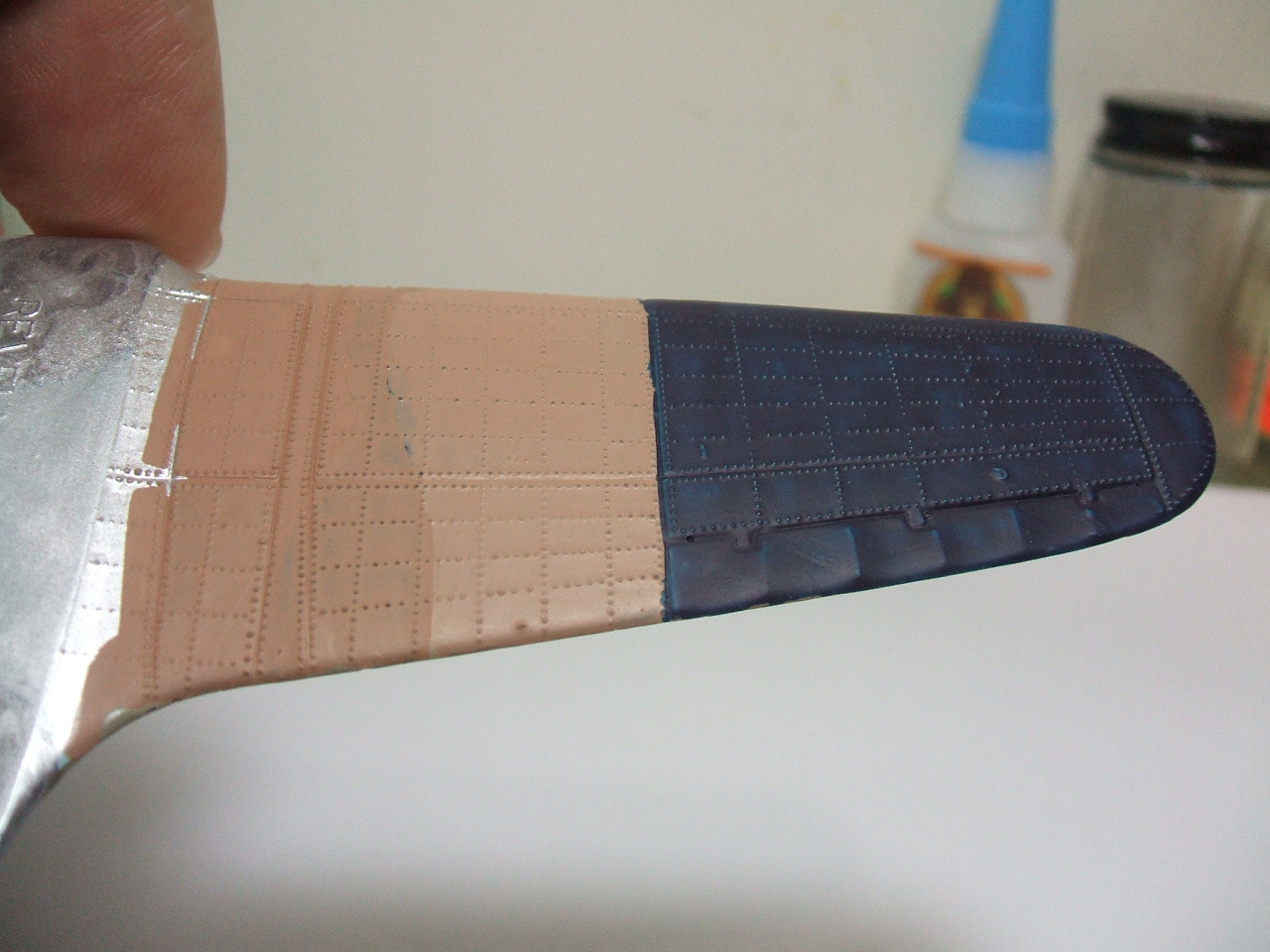
I’m going to put some white stripes on that dark blue. I’ll use Tamiya X-2 Gloss White for this. The final result will look something like invasion stripes. I’m going to put on a first coat of the white paint with a brush of the appropriate size,
This one is too large.
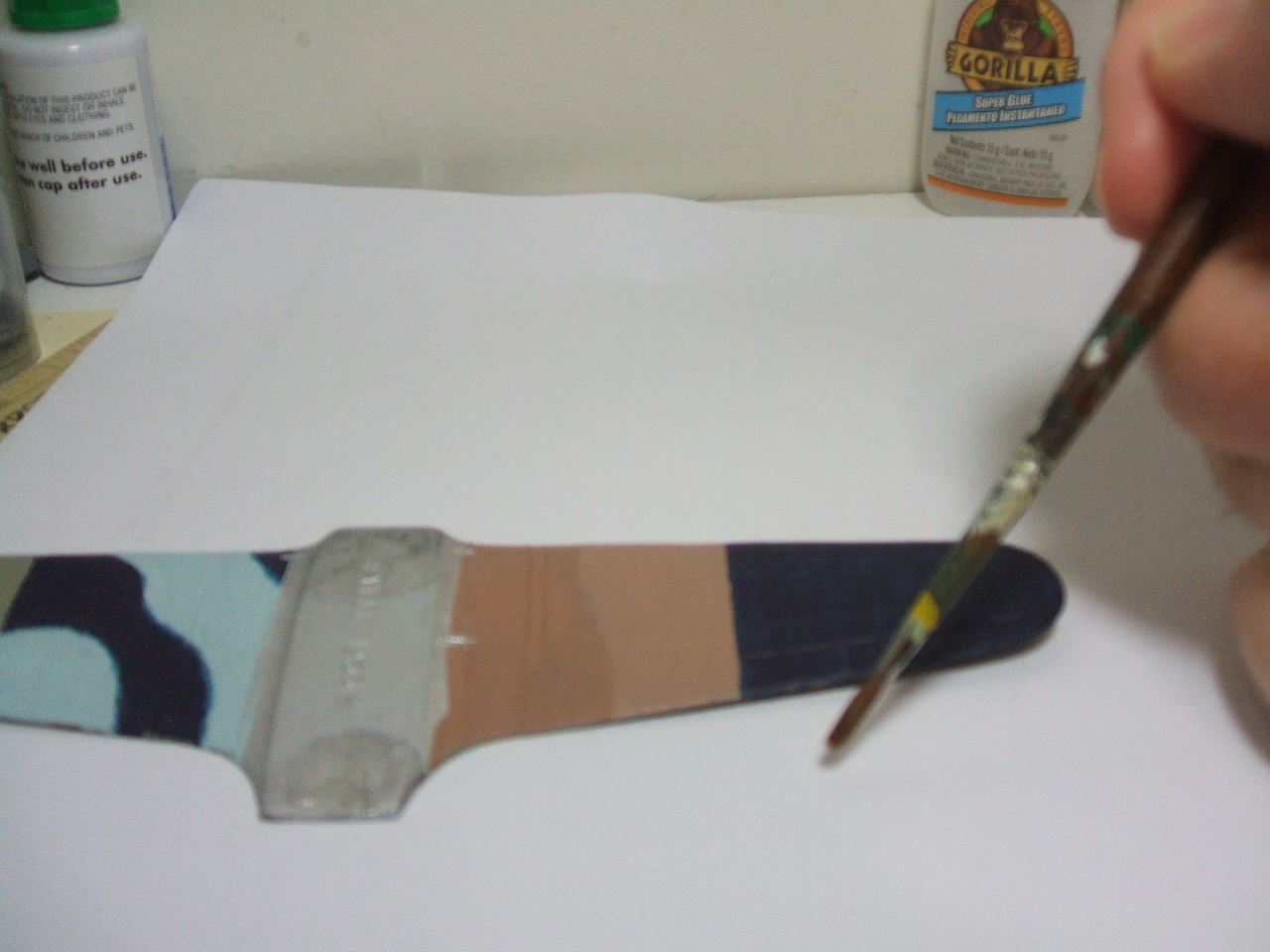
This is more like it.
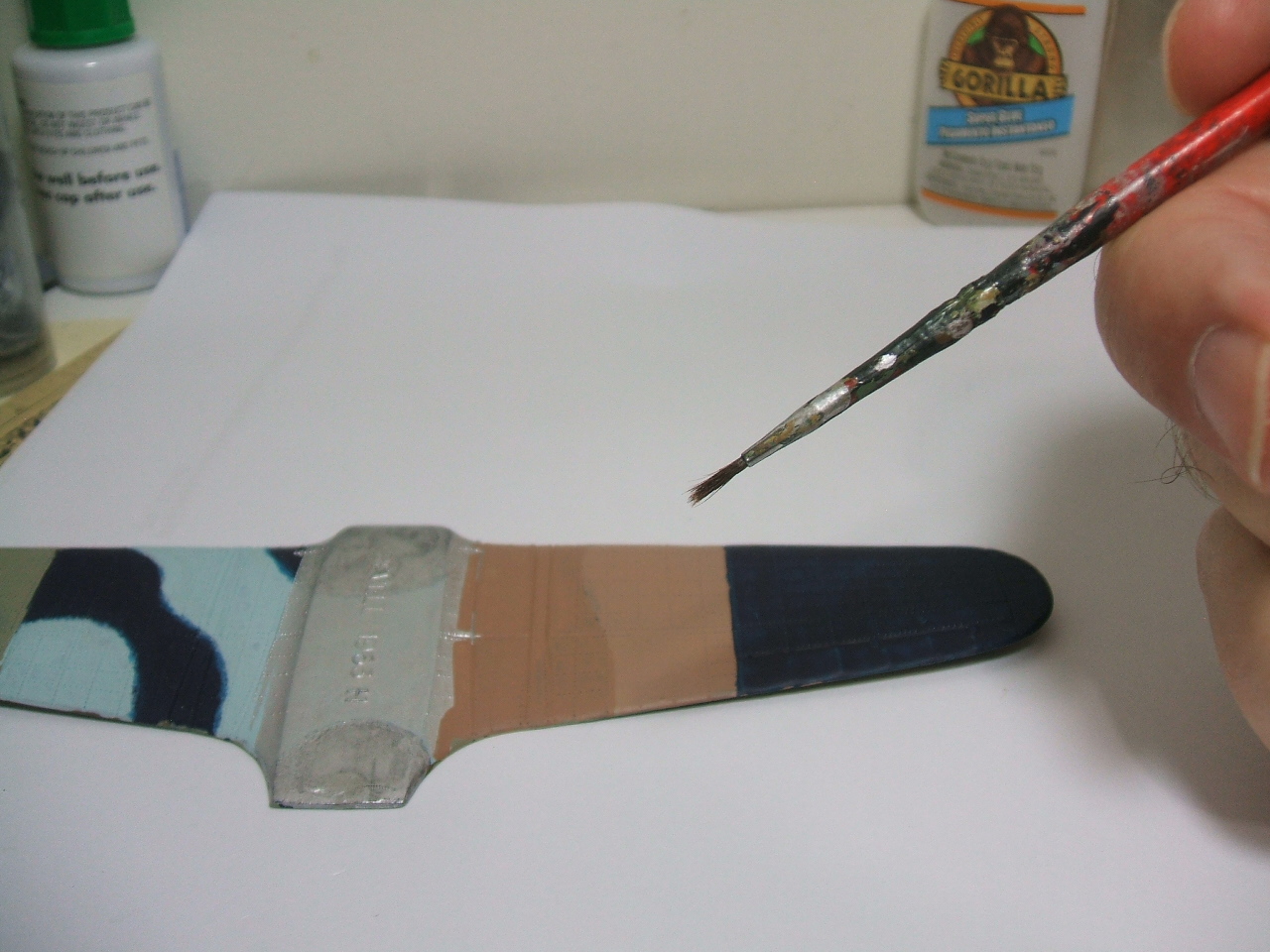
Stir the paint well. Use a bamboo skewer for stirring and really get in there and stir for about one minute.
When painting, it’s essential to be able to see the tip of the brush. I hold the brush like a pencil, and I “pull” it away from me as a I paint.
But before you start painting that stripe, you need to paint the edge where the stripe meets the edge of the wing. If you do this:
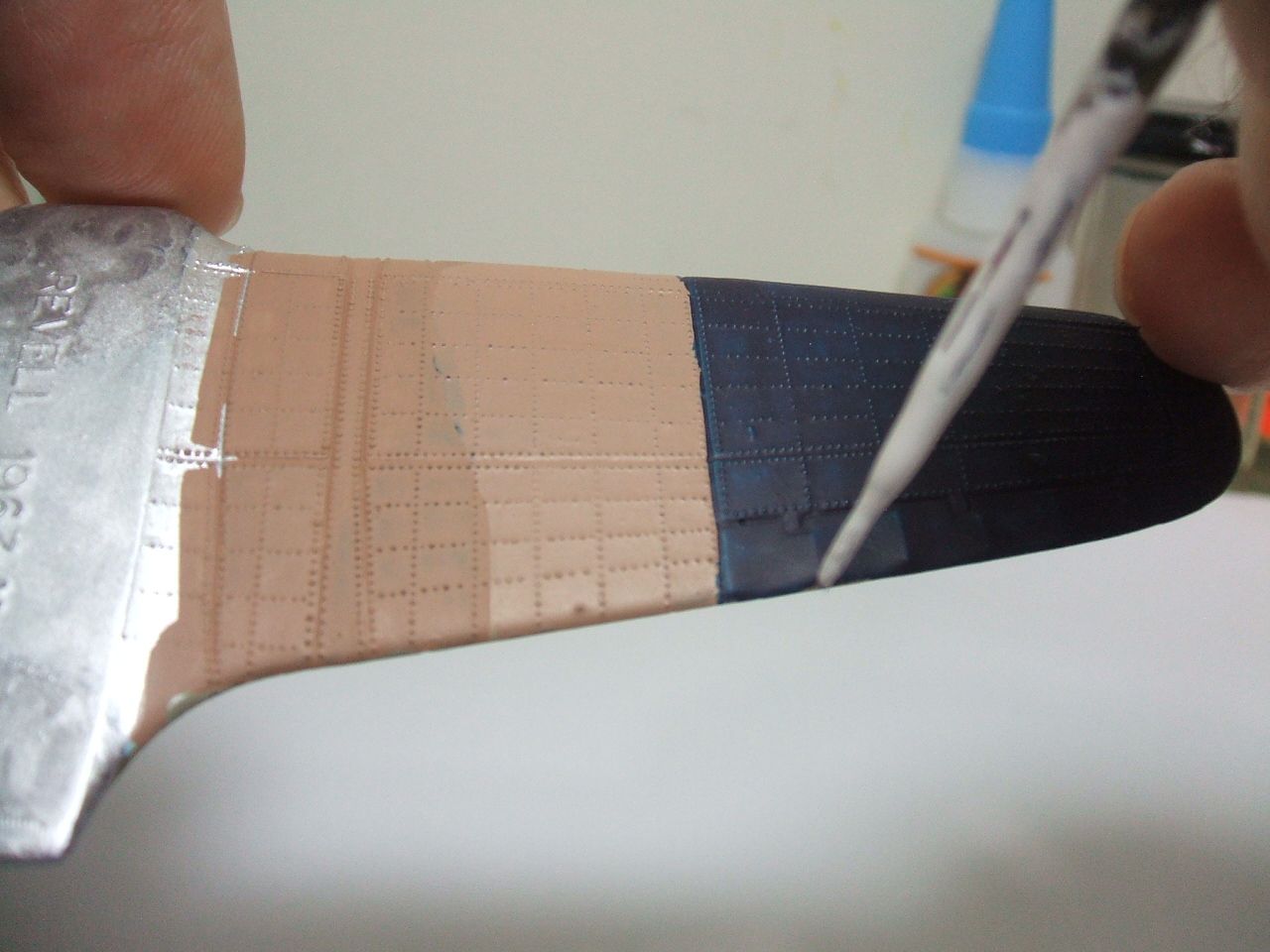
And pull the brush over he edge, it will cause a drop of paint to gather under the wing and form a blob that will spread out and make a mess.
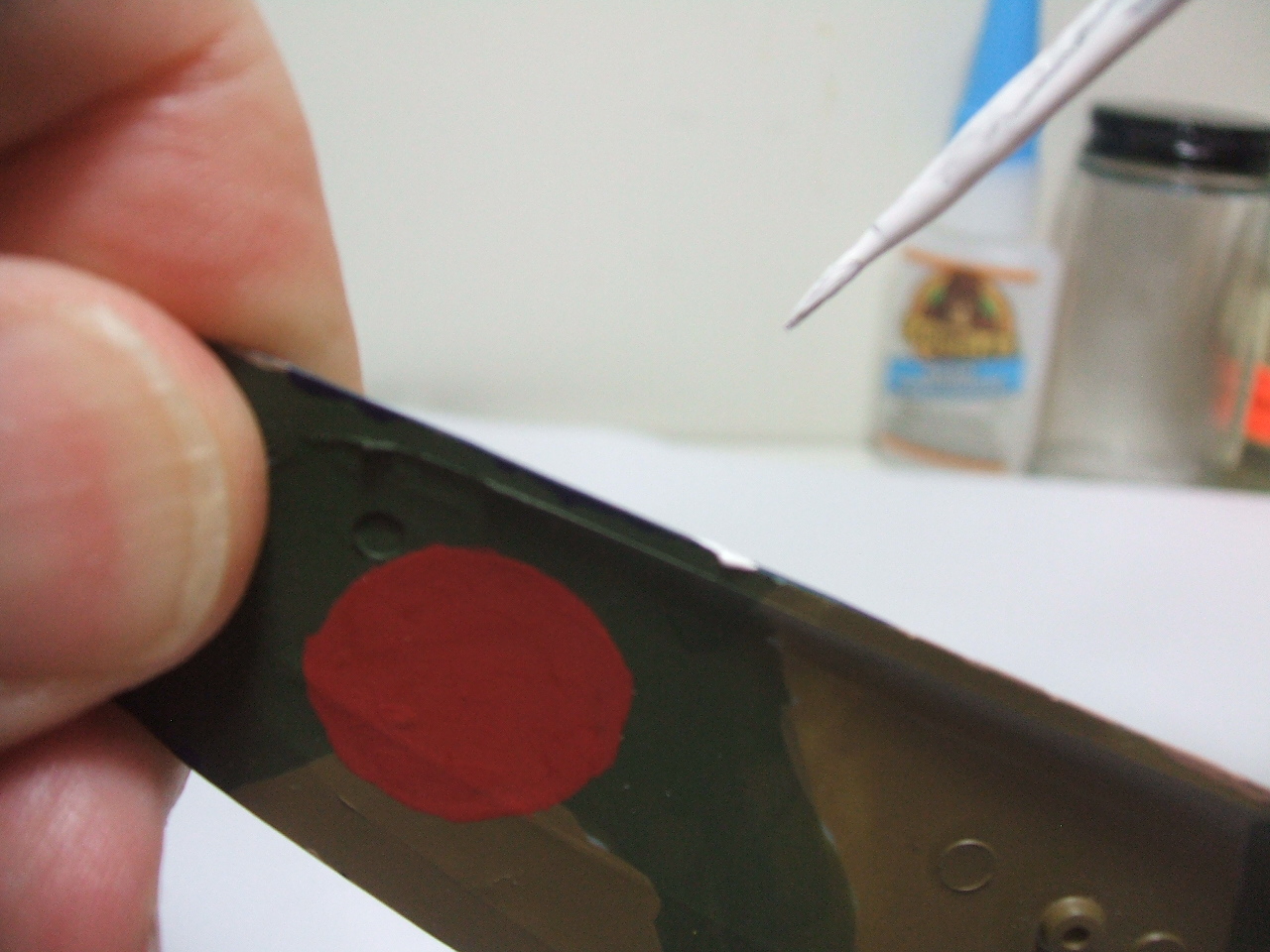
Instead, paint the edge by moving the brush from side to side.
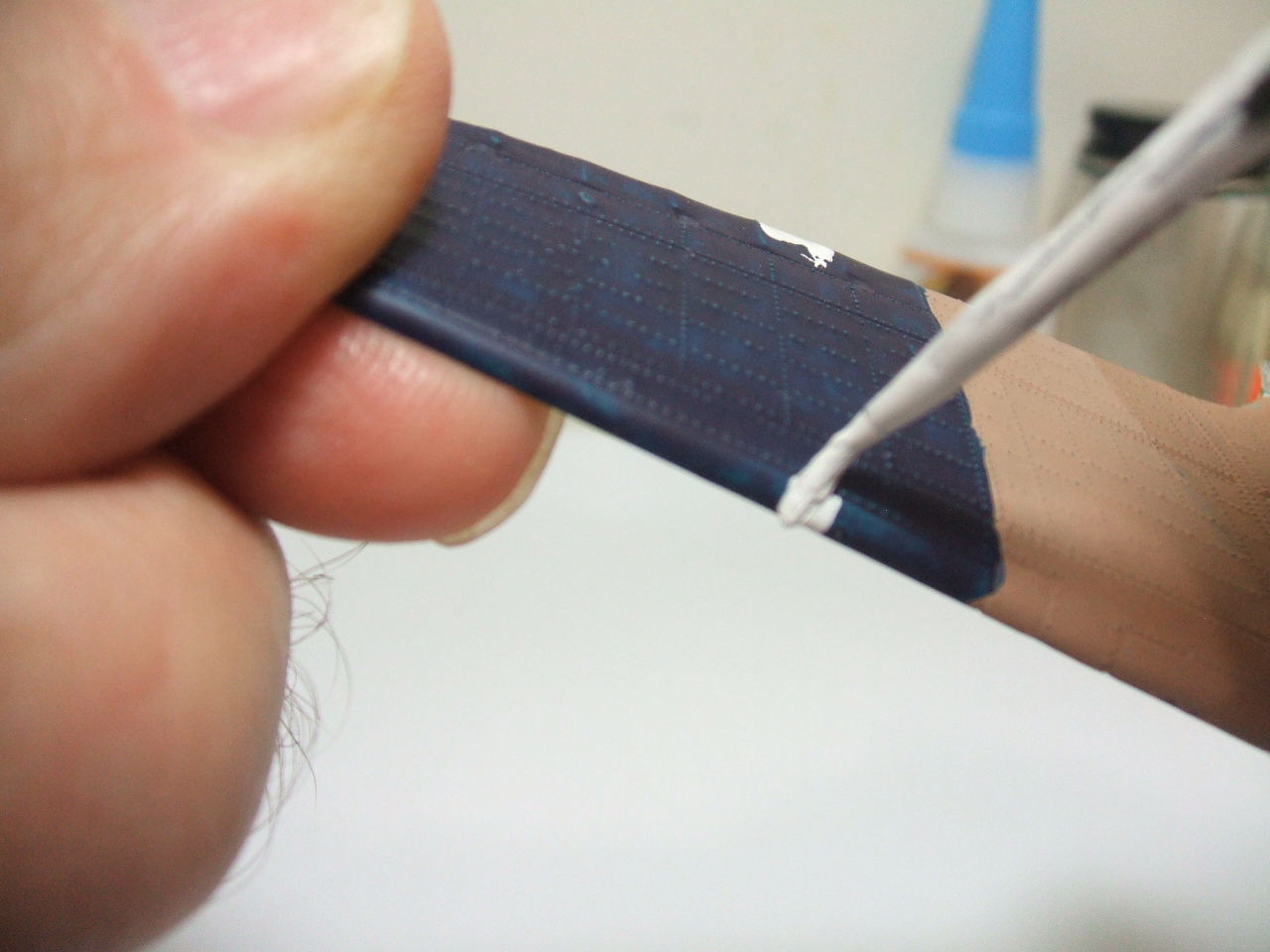
Then pull the brush in a straight line away from you.

Don’t try to “fix” mistakes. Just let them ride. Follow the rivet lines or panel lines if you can see any. Keep going until you have one coat on all the lines.
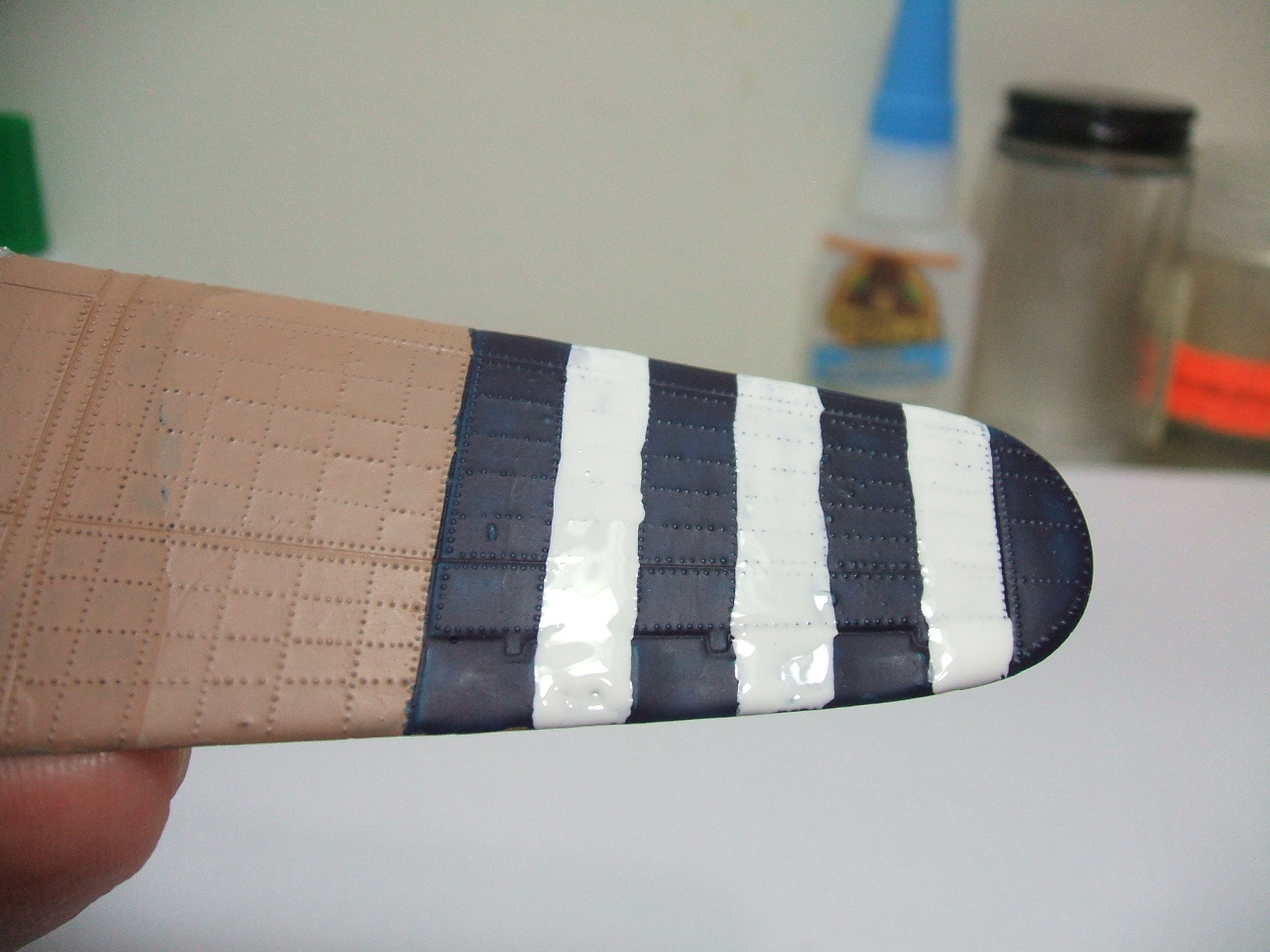
Let this dry for a few hours. If you can’t stand to see it in this condition for a few hours, and try to fix it, you’re doomed. Being able to tolerate ambiguity is one of the most important things I’ve gained from model building.
When this has dried, the white will be as smooth as a baby’s butt (F.B.I. !!) and it will be ready for another fast coat–staying away from the edges as much as possible. You can’t draw and coat at the same time. Draw the first coat. Then, in the second or third coat, just cover it without taking it to the edge.
Once you have some nice smooth white lines, then you can get some of the dark blue and touch them up to make them nice and straight.